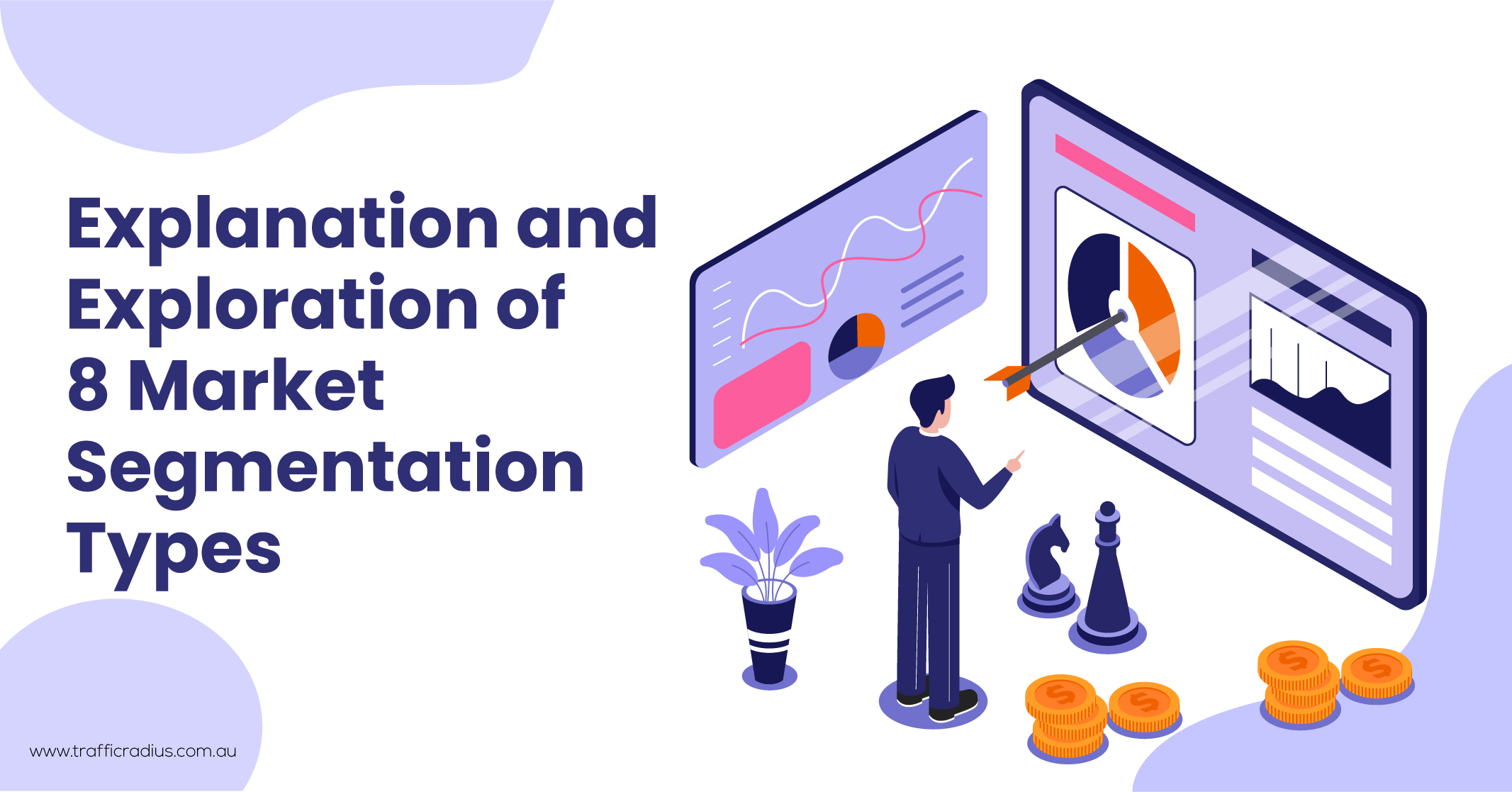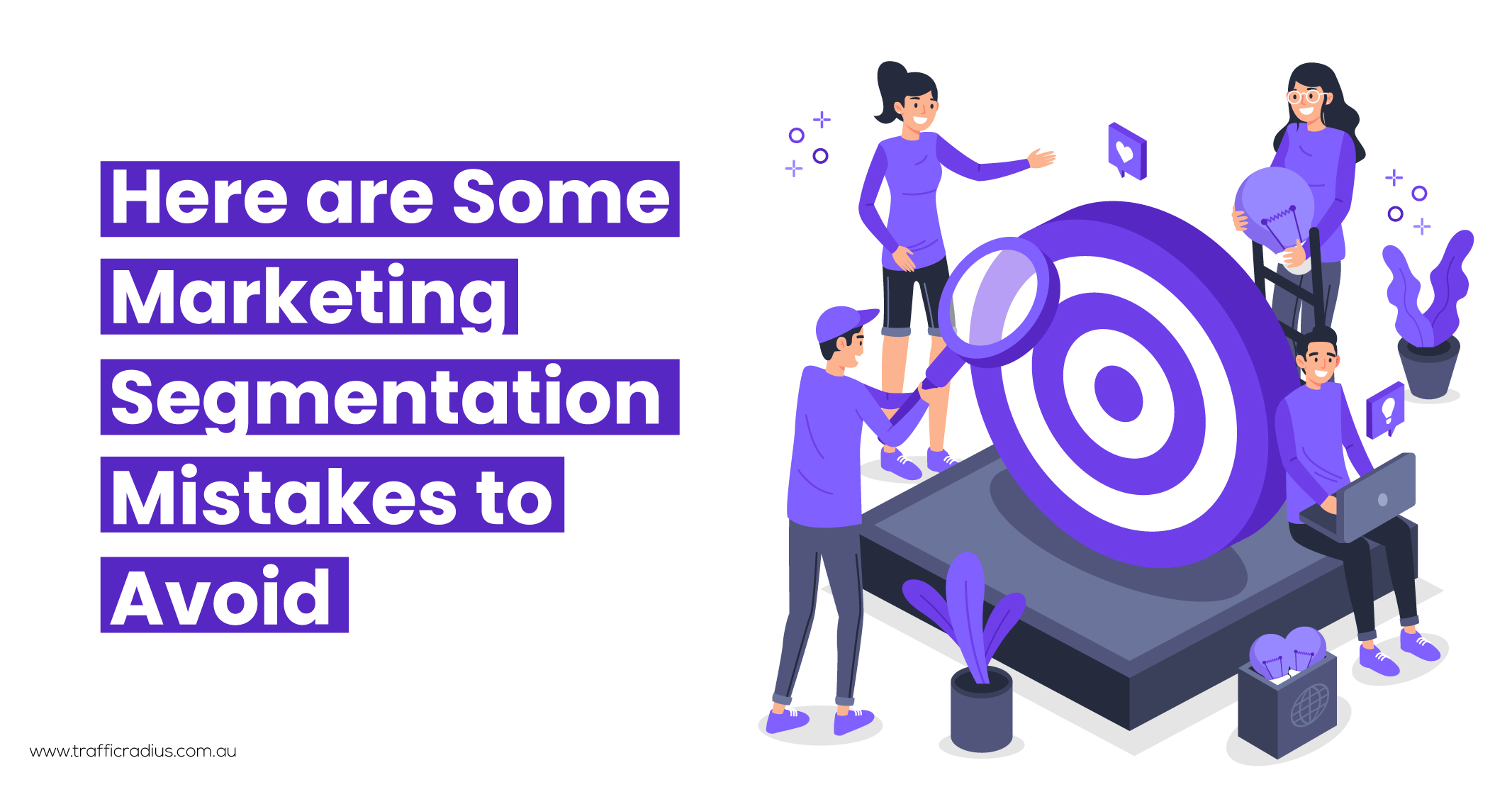I hope you enjoy reading this blog post.
If you want to get more traffic, Contact Us

Click Here - Free 30-Minute Strategy Session
Be quick! FREE spots are almost gone for this Month. Free Quote

Various market segmentation methods enable businesses to gain a deeper understanding of their target audience, leading to the development of more impactful messaging, products and marketing strategies.
Knowing the appropriate market segmentation techniques and when to apply them empowers companies to make well-timed and informed decisions about target market segmentation. So, if you have chosen to segment your market, we will elaborate on the diverse approaches to assist you in achieving success.

Click Here – Free 30-Minute Strategy Session
Be quick! FREE spots are almost gone for this Month
Let’s start with the basics:
Define Market Segmentation:
Market segmentation is the process of breaking down a larger market into smaller groups based on specific characteristics and behaviours. The primary objective is to identify target audiences that share common traits, needs or preferences, which aids in the implementation of more effective marketing strategies. Here are the main points:

There are four primary types of market segmentation: demographic, behavioural, firmographic and psychographic. However, with technological advancements and evolving consumer expectations, it’s crucial to explore all available methods for segmenting your market. To aid you in this endeavour, we have provided a detailed explanation of eight ways to segment a market.
Even if you have already segmented your market based on specific parameters or common characteristics, it’s beneficial to take a step back and consider that a comprehensive audience analysis often requires a combination of tactics in the digital age.
Importance of Market Segmentation:
Market segmentation strategies play a crucial role in modern business strategies for the following reasons:
Market segmentation is a powerful tool that empowers businesses to gain deeper insights into their customers, make informed decisions and develop effective marketing strategies.

Demographic segmentation is analysing the characteristics of the audience based on easily identifiable factors such as:
This type of market segmentation is often the starting point when creating customer personas. Although geographic segmentation is closely related, it is sometimes treated as a separate category.
Using demographic segmentation helps businesses determine how to target marketing efforts or services to specific individuals or groups. It provides valuable insights into how different groups of people respond to various messages, products, or services.
Market Segmentation Example: If a company aims to target a particular age group with a specific product or service, demographic segmentation can assist in identifying the right audience and customising messaging accordingly.
This segmentation strategy is especially advantageous for B2C companies. By understanding the demographics of their target audience, these companies can increase their chances of success by delivering offerings that truly resonate with their customers and prompt them to make a purchase.

Behavioural segmentation offers valuable insights into consumer actions and behaviours. By analysing buying patterns, preferences and interactions, companies can tailor products, services and marketing messages to specific customer segments. It also aids in identifying which customers are most likely to respond positively to campaigns or promotions.
This segmentation approach involves an ongoing process of collecting and analysing behavioural data, which reveals important details about consumers, including their:
Market Segmentation Example:
An e-commerce site or retailer might segment customers based on the channels or devices they use to access the site, while a gaming site could segment based on the frequency of purchases or which competing gaming sites users visit.
Firmographic segmentation focuses on understanding the types of companies that are potential buyers, which is particularly relevant for B2B (business-to-business) companies. Unlike demographic or market segmentation behavioural that deal with individual characteristics, firmographic segmentation delves into the character of the business itself.
To effectively engage with other companies as buyers, thorough company research is essential. This involves analysing factors such as the industry, company size, revenue, location and historical background of potential customers.
Market Segmentation Example:
A company might choose to segment its customers based on their revenue size. This approach allows them to categorise companies with higher revenues as high-value segments, while those with lower revenues fall into the low-value segment. As a result, the company can allocate its resources and tailor marketing efforts more effectively to suit the needs and characteristics of each segment.
Psychographic segmentation aims to uncover the underlying motivations behind why your target audience makes purchasing decisions. Identifying these motivations is essential for effective marketing strategies. Various factors can influence why customers choose to buy from you, including:
It’s important to focus on the psychographic factors that are relevant to your industry. For instance, let’s consider a market segmentation example of how psychographic segmentation could be applied to a market of luxury car buyers:
Understanding these psychographic segments enables companies to tailor their marketing efforts to resonate with the unique preferences and motivations of each group, thus increasing the chances of connecting with their target audience effectively.
Transactional segmentation focuses on how customers conduct their transactions during online shopping and eCommerce experiences.
Market Segmentation Example:
If you run an apparel retail business, you can examine the types of items that customers frequently purchase and create segments based on these patterns. These segments might include customers who predominantly buy dresses, those who prefer purchasing pants or others who purchase a diverse range of items.
Technographic segmentation involves categorising customers based on the technology they utilise. There are several ways to conduct technographic segmentation.
Market Segmentation Example:
One approach is to segment customers according to the operating systems they use. As a software company, you might categorise customers based on whether they use Windows, Mac OS, Linux, Android or other operating systems. Additionally, you can segment customers based on the specific software or devices they use.
Seasonal segmentation involves dividing target markets based on peak periods of interest, which can go beyond just weather or holidays. It considers cultural, sports, or political events that evoke human interest and influence purchasing behaviour.
Although not applicable to every business, certain industries like travel, accommodation, finance, and retail are significantly affected by seasonal trends.
This type of market segmentation offers several advantages, including:
Learn More: Market Research
Benefit segmentation revolves around categorising customers based on the specific benefits they value. While it shares some similarities with behavioural segmentation, it stands as a distinct approach.
Market Segmentation Example: A company may segment its customers according to their preferences for specific benefits, such as loyalty rewards or discounts. They might have a loyalty program that offers discounts or rewards to long-time customers or those who have reached a certain spending threshold. Simultaneously, they could have a separate program catering to customers who prioritise free shipping or early access to new products.
Another perspective on benefit segmentation is understanding the perceived value a product offers to a customer.
A notable market segmentation example can be found in the supplement sector. Suppose a company provides a range of health supplements, including those for weight loss, muscle gain and anti-aging. In this case, the company can segment customers based on the specific benefits they seek, ensuring that they have a readily available market for products offering similar advantages.
Selecting the most suitable market segmentation type hinges on understanding your business and overarching goals. To aid you in this decision-making process, follow these three market segmentation tips:

Avoid rushing through the segmentation process. Ensure that you complete each step thoroughly before moving on to the next one with these market segmentation tips:
For effective marketing research, reliable data on your competitors and the market is crucial. While readily available secondary information exists, its freshness can often be lacking, rendering any analysis potentially irrelevant and outdated.
Dynamic market data changes the game, enabling companies to transition from a reactive to a proactive approach. In times when businesses need to achieve more with fewer resources, market segmentation becomes invaluable in identifying growth opportunities and exploring potential channels for focused efforts.
Traffic Radius provides the means to focus on the most relevant segments for your business, extracting actionable insights and market segmentation guide to inform your strategy and enhance your segment analysis.
What We Do?

LEAVE A REPLY